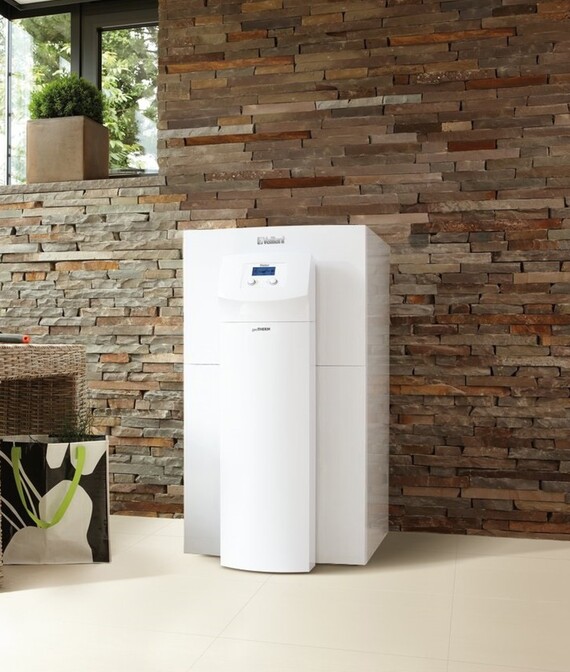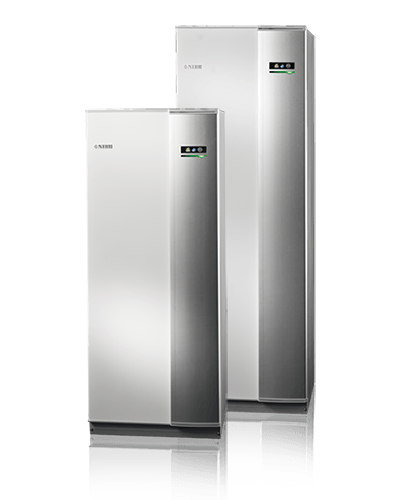
Ground source heat pumps (GSHPs) are a highly efficient and environmentally friendly renewable energy technology that can be used to heat and cool buildings. These systems use the stable temperatures found deep underground to transfer heat into or out of a building, providing an alternative to traditional HVAC systems.
There are two main types of GSHP systems: horizontal and vertical. Each type has its own unique characteristics and is better suited to different types of properties and applications.
Horizontal GSHP systems are typically the most cost-effective to install, but they require a larger area for the installation of the underground loop. These systems are best suited for properties with a large, open yard or field. The loop is installed by digging a shallow trench and burying the pipes in it.
Vertical GSHP systems are more expensive to install, but they take up less space and can be a good option for properties with limited space or where the soil is not suitable for a horizontal system. These systems involve drilling deep holes into the ground and inserting the pipes into them.
Both horizontal and vertical GSHP systems are highly efficient and can provide significant energy savings and environmental benefits. The best type of system for a particular property will depend on a variety of factors, including the available space, soil type, and budget. It is important to consult with a professional to determine the most appropriate system for your needs.
Horizontal GSHP System
Horizontal ground source heat pump (GSHP) systems are a type of renewable energy technology that utilizes the naturally stable temperatures found deep underground to provide heating and cooling for buildings. These systems are installed by burying a network of pipes, called a loop, in a shallow trench dug into the ground.
One of the main benefits of horizontal GSHP systems is their cost-effectiveness. These systems are typically less expensive to install than vertical GSHP systems, making them a more budget-friendly option for some homeowners. They also have a longer lifespan and require less maintenance than traditional HVAC systems, which can result in significant cost savings over time.
However, horizontal GSHP systems do require a larger area for the installation of the underground loop, making them best suited for properties with a large, open yard or field. They are not as suitable for properties with limited space or those with soil that is not suitable for digging.
Overall, horizontal GSHP systems are a cost-effective and efficient option for those looking to reduce their energy consumption and carbon footprint.
Vertical GSHP Systems
Vertical ground source heat pump (GSHP) systems are a type of renewable energy technology that utilizes the naturally stable temperatures found deep underground to provide heating and cooling for buildings. These systems are installed by drilling deep holes into the ground and inserting a network of pipes, called a loop, into them.
One of the main advantages of vertical GSHP systems is their space-saving design. These systems take up less space than horizontal GSHP systems, making them a good option for properties with limited space or those with soil that is not suitable for digging.
However, vertical GSHP systems are typically more expensive to install than horizontal systems, making them a less budget-friendly option for some homeowners. They also have a slightly shorter lifespan and may require slightly more maintenance than horizontal systems.
Overall, vertical GSHP systems are a space-saving and efficient option for those looking to reduce their energy consumption and carbon footprint, but they may require a larger upfront investment.

Comparing the Costs of Horizontal and Vertical GSHP Systems
Ground source heat pump (GSHP) systems are a renewable energy technology that can provide significant energy savings and environmental benefits. There are two main types of GSHP systems: horizontal and vertical. Each type has its own unique characteristics and is better suited to different types of properties and applications.
One of the key factors to consider when choosing between horizontal and vertical GSHP systems is cost. Horizontal GSHP systems are typically less expensive to install than vertical systems, making them a more budget-friendly option for some homeowners. The cost of installing a horizontal GSHP system can range from around $20,000 to $30,000, depending on the size of the system and other factors.
Vertical GSHP systems are more expensive to install, with costs ranging from around $30,000 to $50,000 or more. The higher upfront cost of vertical systems can make them a less attractive option for some homeowners, but they may be a good option for properties with limited space or soil that is not suitable for digging.
In addition to the initial installation costs, it is also important to consider the long-term costs of operating and maintaining a GSHP system. Both horizontal and vertical GSHP systems have a longer lifespan and require less maintenance than traditional HVAC systems, which can result in significant cost savings over time.
Overall, the most cost-effective GSHP system will depend on a variety of factors, including the size of the property, the available space, and the budget of the homeowner. It is important to consult with a professional to determine the most appropriate system for your needs.
